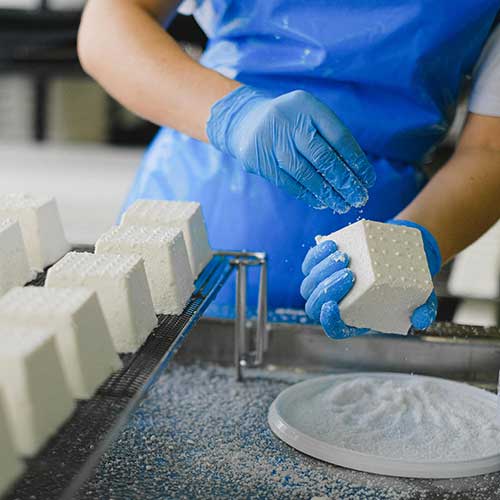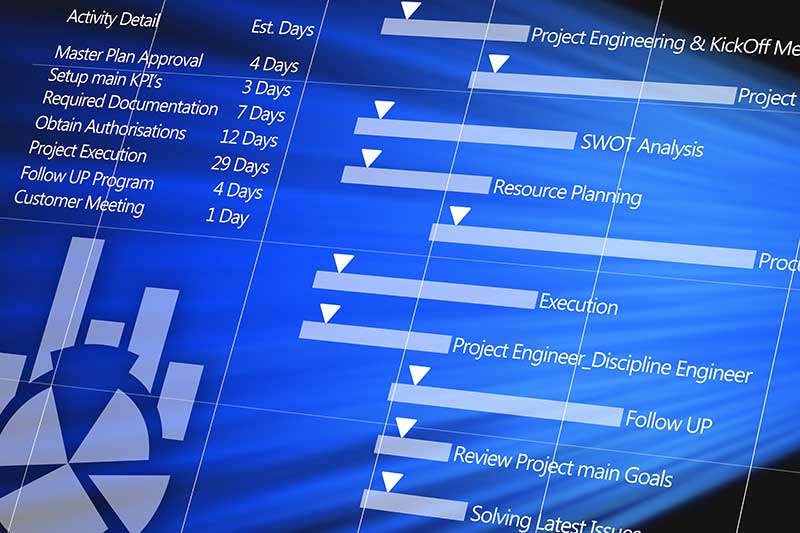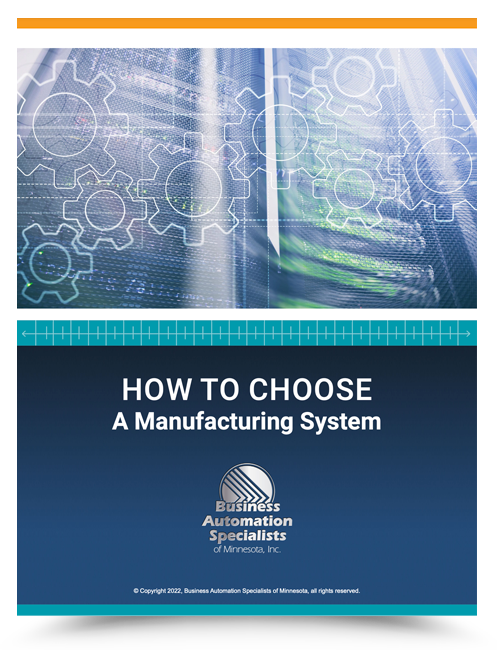Author, Ron Ketterling
In our “Effective Ways to Reduce Manufacturing Costs” series, we discussed how standardization supports the concepts of build-to-order and mass customization. By making all parts available at all points of use, standardization improves flexibility and reduces costs for manufacturers.
Manufacturing standardization is the process of developing and implementing uniform procedures, guidelines, and specifications across all stages of production. It ensures consistency, quality, and efficiency by adhering to established best practices and industry standards.
Standardization helps manufacturers produce products that meet the same quality and performance criteria, regardless of when, where, or by whom they are made. This reduces variability, minimizes errors, and enhances overall productivity. Standardization can apply to everything from raw material specifications and equipment calibration to production methods and quality control processes. Standardization ensures that products are consistently high-quality, processes are predictable and efficient, and that the whole operation runs like a well-oiled machine.
In this article, we’ll explore manufacturing standardization in depth, looking at everything from the benefits of standardization to different types and strategies for standardization. We’ll also discuss how an ERP can make a huge difference in the journey towards standardization across all of your company’s operations.
Benefits of Standardization
To begin, let’s take a look at the benefits of standardization. The following benefits make standardization a great choice when looking for cost-saving strategies.
Reduced Manufacturing Costs
Standardization can reduce manufacturing costs by 50%. Through purchasing leverage, manufacturers can reduce their purchasing costs considerably. Once purchasing of parts and products is standardized, the cost of inventory will go down. Since common parts are stored and resupplied only as needed, BOM/MRP/ordering expenses will be avoided.
Overhead costs, such as purchasing, put away, picking and bill paying, will also decrease. There is less overhead in procuring standard parts and materials that are common and more readily available. On a related note, more standardization means less picking and manufacturing errors.
Quality
The quality of your product improves with standardization in place. Fewer picking and manufacturing errors means fewer quality problems. Reducing components means less testing for incoming components. When manufacturing companies standardize their parts and processes, the result is a high-quality, low-cost product.
Flexibility
Standardization eliminates set-up, greatly reduces inventory, and simplifies supply chain management. Improving the flexibility of operations results in better delivery of products. With standardized components, you can change over work centers quickly. This is a result of not having to put away and restock as many components when a product switch occurs.
Responsiveness
By minimizing the amount of parts used and simplifying procedures, manufacturing companies can focus on improving their response time. Standardization frees up time and allows employees to concentrate on more efficient processes, such as build-to-order. With parts being available and delivered quickly from vendors, companies can provide their customers a quick turnaround on requested products.
Using Standardization to Reduce Manufacturing Costs
Standardization greatly reduces costs and allows manufacturing companies to focus on improving their products and procedures.
Types of Standardization
Now that we’ve gone over some of the benefits of manufacturing standardization, we’ll move on to outline several different kinds of standardization available to manufacturers.
1. Tool Standardization
Tool standardization reduces how many tools are required for each step of the manufacturing process. In order to begin this process, companies must list the tools required in each stage (assembly, alignment, calibration, testing, service and repair) and analyze the tools used for existing products. In order to find the most common tool, companies must review and prioritize tool usage history. All areas of the manufacturing department need to collaborate to determine the preferred tools among all the different departments. Companies develop their common parts list from the list of common tools.
2. Feature Standardization
This type of standardization focuses on standardizing “features” using the same procedures used to standardize parts and tools. A “feature” is any configuration that requires a separate tool, such as a drill, hole punch or cutting tool bit for machine tools.
3. Raw Materials Standardization
This approach focuses on standardizing raw materials in order to make manufacturing processes more flexible. Bar stock/tubing, protective coatings, sheet metal, programmable chips and molding/casting are examples of standardized materials. Raw material standardization streamlines the products made using the same materials, tools, and mechanisms.
4. Process Standardization
This may be the most difficult type of standardization—it involves workflows and behavior, not just physical objects. In order to standardize processes, the engineering of the products and processes must be simultaneous. This type of standardization ensures the parts and products are built without any setup changes. Well thought out design processes avoids wasted time and materials.
The standardization of parts, products and processes can lower manufacturing costs by 50%. Standardization can increase efficiency, improve quality and maintain the flexibility required in the manufacturing process. Once you’ve standardized operations across the board, your company has more room to maneuver, make data-driven decisions, and respond to changing markets.
The Zero-Based Principle
There are many different approaches to standardization. We’d like to present one of the most common: the zero-based principle.
The zero-based principle is an effective technique which reduces the number of different parts by standardizing certain preferred parts. While this usually applies to purchased parts, it can also apply to manufactured parts. Founded upon the zero-based principle, this technique asks: “What is the minimum list of part types needed to design new products?”
This approach works best if companies are at the beginning stage of developing a product line. Before product development begins, the company needs to decide which parts are essential in creating the product line. By developing the entire line around common parts, companies can eliminate excess parts and save on manufacturing costs.
The idea of this approach is to start at zero and add only what is necessary for the creation of the product rather than eliminating products from a long list. Eliminating parts from your current list would take a great amount of effort and time. The zero-based approach is the more efficient and effective route.
While many approaches remove excess parts from an existing system, the zero-based approach excludes the excess parts from the beginning. This saves significant costs as excess parts incur overhead costs for administration and lower the manufacturing plant’s efficiency and machine performance.
Companies must remember that this approach is meant to be implemented at the beginning of a new project, not in the middle of a current product line. However, when the common parts are functionally equivalent in all respects, parts may be eliminated on existing products and replaced with equivalent parts.
The Role of an ERP in Manufacturing Standardization
If standardization sounds daunting to you, you’re not alone. Thankfully, help is available! Implementing an ERP is one of the best ways to achieve manufacturing standardization in your company. Here are some ways that an ERP system enhances manufacturing standardization:
- Uniform Processes: An ERP system integrates various business functions into one platform, ensuring that all departments follow the same standardized procedures. This uniformity reduces process variability and ensures consistent product quality.
- Automated Workflows: By automating routine tasks, an ERP system minimizes manual intervention, which reduces the chances of errors and inconsistencies. Automated workflows ensure that every step of the manufacturing process follows a predefined standard.
- Best Practices Implementation: ERP systems often come with built-in industry best practices, allowing manufacturers to adopt standardized methods without having to develop them from scratch. This helps in maintaining high-quality standards across the board.
- Data Consistency: With a centralized database, an ERP system ensures that all departments access the same accurate and up-to-date information. This data consistency is crucial for maintaining standardization and making informed decisions.
- Resource Optimization: By providing insights into resource utilization, an ERP system helps in planning and allocating resources more effectively. Standardized resource planning minimizes waste and ensures that manufacturing processes are as efficient as possible.
- Compliance and Quality Control: ERP systems facilitate adherence to industry regulations and standards by integrating compliance checks into the manufacturing processes. This ensures that every product meets regulatory and quality standards, reducing the risk of non-compliance penalties.
- Improved Training and Onboarding: With standardized processes in place, training new employees becomes more straightforward and efficient. Employees can quickly learn and adhere to the company’s standardized procedures, reducing the learning curve and enhancing productivity.
- Enhanced Reporting and Analytics: An ERP system provides real-time data and advanced analytics, enabling manufacturers to monitor and evaluate their processes continuously. This ongoing analysis helps identify areas for improvement and ensures that standardization efforts are effective and sustained.
An ERP system’s ability to streamline operations, automate workflows, and enforce best practices significantly contributes to manufacturing standardization, leading to improved efficiency, consistency, and quality in production processes. If you don’t yet have an ERP, this is the place to start your standardization journey.
Ready to Get Started with Standardization? We Can Help!
Implementing standardization within a manufacturing plant requires the right tools. Download our “How to Choose a Manufacturing System” guide to see if your current system will be a help or a hindrance to implementing standardization and reducing your manufacturing costs.
If you’re looking for the right software to make standardization a reality, contact our business automation experts today.









